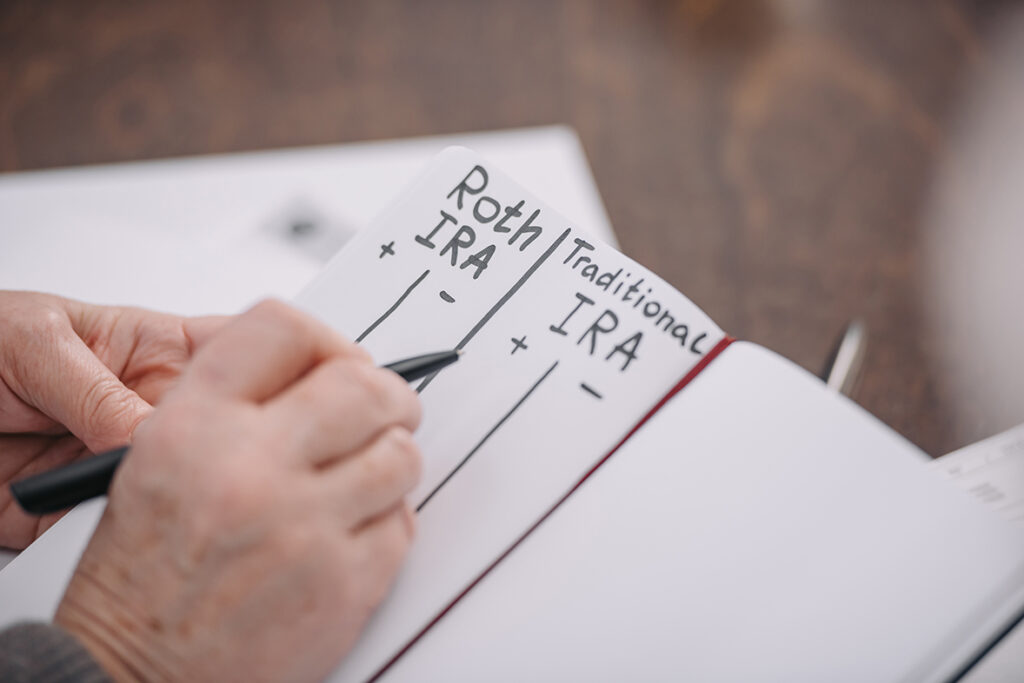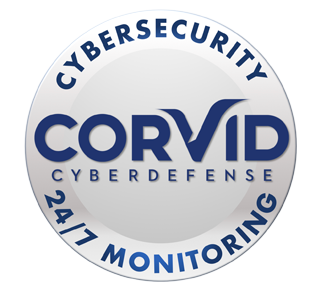Article originally published by Forbes.com.
Written by Jamie Hopkins
 “With talks of major long-term changes to retirement planning as part of the potential tax reform legislation, it’s a great time to start thinking about Roth IRA conversions.
“With talks of major long-term changes to retirement planning as part of the potential tax reform legislation, it’s a great time to start thinking about Roth IRA conversions.
As 2021 comes to a close, you might be considering Roth conversions as part of your end-of-year planning, especially in light of the historic low tax rates and looming tax rate hikes.
If you’re considering Roth conversions, keep in mind that you need to avoid common Roth conversion traps, including being unaware of aggregation rules, the five-year rules and converting yourself into higher tax rates.
To cover some basics, while working, you can contribute to Roth IRAs with after-tax dollars and get tax-free withdrawals if you meet certain conditions. You can also get money into a Roth IRA via a conversion.
A Roth conversion would take money you have in a traditional IRA or retirement account – like a 401(k) – and convert it to a Roth IRA. When you convert tax-deferred money from the traditional IRA to the Roth IRA, you’d pay taxes on the amount converted as if it were taxable ordinary income. The taxable portion converted would be considered income for the tax year in which the conversion occurred.
When considering a Roth conversion for 2021, also keep in mind how a proposed tax bill unveiled by the House Ways and Means Committee in mid-September might impact your plans. For example, the bill proposes that Roth conversions would not be allowed for single filers who make $400,000 or more, and those married filing jointly who make $450,000 or more, beginning on Dec. 31, 2031. While that’s a decade away, this type of income-based limitation on Roth conversions could come back into fold at some point.”
To read the remainder of this article, please click here.




















 Megan Jones joined the ILG Financial team in 2020 as marketing director. Megan and her husband live in Fredericksburg, VA with their German Short Haired Pointer, Gus. Megan is a graduate of Longwood University and holds a degree in communications. Megan is the oldest of Dave Lopez’s three children and not only enjoys working alongside her father, but also with her cousin, Chase, who joined the ILG Financial team in 2020 as an advisor. Megan is also a fully licensed Life, Health, and Annuity agent. When not at work, Megan enjoys sitting on the back porch with family and friends enjoying food and music.
Megan Jones joined the ILG Financial team in 2020 as marketing director. Megan and her husband live in Fredericksburg, VA with their German Short Haired Pointer, Gus. Megan is a graduate of Longwood University and holds a degree in communications. Megan is the oldest of Dave Lopez’s three children and not only enjoys working alongside her father, but also with her cousin, Chase, who joined the ILG Financial team in 2020 as an advisor. Megan is also a fully licensed Life, Health, and Annuity agent. When not at work, Megan enjoys sitting on the back porch with family and friends enjoying food and music. Chase Lopez joined the ILG Financial team in 2020 as an advisor. Chase is a 2016 James Madison University graduate with a degree in management. Chase has been trained under the tutelage of Dave Lopez, who is not only the founder and managing member of ILG Financial, but also is Chase’s uncle and godfather. He also enjoys working alongside his cousin, Megan, who is Dave’s daughter.
Chase Lopez joined the ILG Financial team in 2020 as an advisor. Chase is a 2016 James Madison University graduate with a degree in management. Chase has been trained under the tutelage of Dave Lopez, who is not only the founder and managing member of ILG Financial, but also is Chase’s uncle and godfather. He also enjoys working alongside his cousin, Megan, who is Dave’s daughter. Amy Anderson joined the ILG Financial team in 2023 as the client relations coordinator. Her responsibilities include scheduling of appointments, annual check-up notifications, and annuity and required minimum distribution assistance. She is a graduate of Harding University with a degree in Computer Information Systems. Amy and her husband have two children and she enjoys reading, crocheting, music and spending time with her family.
Amy Anderson joined the ILG Financial team in 2023 as the client relations coordinator. Her responsibilities include scheduling of appointments, annual check-up notifications, and annuity and required minimum distribution assistance. She is a graduate of Harding University with a degree in Computer Information Systems. Amy and her husband have two children and she enjoys reading, crocheting, music and spending time with her family. Jessica Carson joined the ILG Financial team in 2018 as an agent. Jessica and her husband have four children, two dogs, 3 barn cats, 5 chickens, and three parakeets. She indeed loves her children and pets! When not at work, Jessica enjoys playing the piano and cello as well as traveling and spending time outside with her family, hiking, fishing, and boating.
Jessica Carson joined the ILG Financial team in 2018 as an agent. Jessica and her husband have four children, two dogs, 3 barn cats, 5 chickens, and three parakeets. She indeed loves her children and pets! When not at work, Jessica enjoys playing the piano and cello as well as traveling and spending time outside with her family, hiking, fishing, and boating. Terri Center joined the ILG Financial team in 2019 as client services manager. She handles client records, application processing, and gathering information to provide a professional and friendly experience with all of our clients. Terri is a graduate of Oakland University. She is married and has two children. She enjoys hiking, family time, and puzzle challenging video games. She also likes to share her creativity in her canvas paintings and sewing projects.
Terri Center joined the ILG Financial team in 2019 as client services manager. She handles client records, application processing, and gathering information to provide a professional and friendly experience with all of our clients. Terri is a graduate of Oakland University. She is married and has two children. She enjoys hiking, family time, and puzzle challenging video games. She also likes to share her creativity in her canvas paintings and sewing projects.